Ora 00979 Not A Group By Expression
Observing the ORA-00979 Error
When working with Oracle databases, it is not uncommon to encounter different types of errors. One such error is the ORA-00979, which specifically refers to “not a group by expression.” This error occurs when a SELECT statement includes an aggregate function but does not properly group the non-aggregated columns.
Understanding the ORA-00979 error
The ORA-00979 error is a specific type of error that occurs when using the GROUP BY clause in a SELECT statement. The error message is triggered if the SELECT statement includes an aggregate function, such as SUM, COUNT, AVG, etc., but fails to properly group the non-aggregated columns.
Causes of the ORA-00979 error
There can be several causes for the ORA-00979 error. Some of the common causes include:
1. Incorrect usage of aggregate functions: When using aggregate functions, non-aggregated columns must be included in the GROUP BY clause. Failure to include these columns will result in the ORA-00979 error.
2. Incorrect syntax: Errors in the structure and syntax of the SELECT statement can also lead to the ORA-00979 error. This includes missing commas, incorrect column names, or misplaced clauses.
3. Invalid use of subqueries: When using subqueries or derived tables, it is important to ensure that the outermost SELECT statement includes all necessary non-aggregated columns in the GROUP BY clause. Failure to do so can trigger the ORA-00979 error.
Analyzing the error message
When encountering the ORA-00979 error, it is essential to analyze the error message for better understanding and troubleshooting. The error message will typically provide details about the specific section of the query that is causing the problem. By carefully examining the error message, it becomes easier to identify the problematic query and take appropriate action to resolve the error.
Solving the ORA-00979 Error
Resolving the ORA-00979 error requires careful analysis and corrective actions. Here are some steps to help solve this error:
1. Identifying the problematic query: Begin by analyzing the error message and locating the specific query that triggered the error. This will help narrow down the source of the problem.
2. Correcting the SELECT statement: Review the SELECT statement to identify any syntax errors, missing commas, or misplaced clauses. Correcting these issues can help alleviate the ORA-00979 error.
3. Including all non-aggregated columns in the GROUP BY clause: Ensure that all non-aggregated columns from the SELECT statement are included in the GROUP BY clause. This properly aligns the grouping and resolves the error.
4. Utilizing aggregate functions correctly: Make sure to use aggregate functions appropriately and in accordance with the grouping of non-aggregated columns. Incorrect usage of aggregate functions can trigger the ORA-00979 error.
5. Using subqueries or derived tables: If the error is caused by the use of subqueries or derived tables, ensure that the outermost SELECT statement includes all necessary non-aggregated columns in the GROUP BY clause.
6. Using the HAVING clause instead of the WHERE clause: In some cases, using the HAVING clause instead of the WHERE clause can resolve the ORA-00979 error. The HAVING clause is specifically designed for filtering groups after the grouping has occurred.
Preventing the ORA-00979 Error
While it is essential to know how to resolve the ORA-00979 error, it is equally important to prevent it from occurring in the first place. Here are some preventive measures to consider:
1. Being aware of the GROUP BY clause’s requirements: Understand the requirements and purpose of the GROUP BY clause. This will help avoid errors and ensure that the grouping is performed correctly.
2. Ensuring columns in the SELECT statement are included in the GROUP BY clause: Always include all non-aggregated columns from the SELECT statement in the GROUP BY clause. This will ensure proper grouping and prevent the ORA-00979 error.
3. Considering the use of aggregate functions: Evaluate the need for using aggregate functions and determine if they are necessary for your query. Properly using aggregate functions can help avoid the ORA-00979 error.
4. Using proper syntax and conventions: Follow proper syntax and conventions when writing SQL queries. This includes using commas to separate columns, placing clauses in the correct order, and accurately referencing column names.
5. Reviewing existing queries for potential errors: Regularly review and analyze existing queries to identify any potential errors, including the ORA-00979 error. By proactively identifying and fixing these errors, you can prevent them from causing issues in the future.
Additional Considerations and Best Practices
While resolving and preventing the ORA-00979 error, it is essential to keep some additional considerations and best practices in mind:
1. Understanding the purpose and use of the GROUP BY clause: Familiarize yourself with the purpose and functionality of the GROUP BY clause. This will enhance your understanding and troubleshooting abilities.
2. Avoiding common mistakes related to the GROUP BY clause: Learn from common mistakes associated with the GROUP BY clause and strive to avoid them. This includes incorrectly grouped columns, invalid use of aggregate functions, or missing non-aggregated columns in the GROUP BY clause.
3. Identifying other related errors and potential solutions: The ORA-00979 error is just one of the many errors related to grouping and aggregates. Familiarize yourself with other related errors, such as ORA-00937: not a single-group group function and ORA-00934: group function is not allowed here, and their potential solutions.
4. Testing and validating query modifications: Whenever making changes to a query to resolve the ORA-00979 error, thoroughly test and validate the modifications. This will ensure that the query produces the desired results and does not introduce any new errors.
5. Documenting and sharing knowledge for future reference: As you encounter and resolve the ORA-00979 error, document the solutions and share your knowledge with others. This will serve as a valuable reference for yourself and others who may face similar issues in the future.
In conclusion, the ORA-00979 error is a common issue encountered when working with the GROUP BY clause in Oracle databases. Understanding the causes, analyzing error messages, and following proper steps to solve and prevent this error are crucial for effective database management. By adhering to best practices, employing proper syntax, and staying vigilant, you can minimize the occurrence of the ORA-00979 error and ensure the smooth functioning of your Oracle database.
Ora-00979: Not A Group By Expression – Oracle Database 12C Error Messages
Keywords searched by users: ora 00979 not a group by expression Not a GROUP BY expression Oracle, ORA-00937: not a single-group group function, ORA-00934: group function is not allowed here, GROUP BY Oracle, Group BY learnsql, Group function is not allowed here, SELECT with GROUP BY, Select first row group by oracle
Categories: Top 28 Ora 00979 Not A Group By Expression
See more here: nhanvietluanvan.com
Not A Group By Expression Oracle
When working with Oracle databases, one common error that new and experienced users come across is the “Not a GROUP BY expression” error. This error occurs when you are trying to execute a SQL query that includes a GROUP BY clause but does not properly satisfy the rules of aggregation. In this article, we will delve into the specifics of this error, understand why it occurs, and explore ways to resolve it.
Understanding the Error:
The “Not a GROUP BY expression” error in Oracle is raised when a SELECT statement contains a GROUP BY clause but fails to meet one or more of the following requirements:
1. All columns in the SELECT statement that are not part of an aggregate function should be included in the GROUP BY clause.
2. All columns in the SELECT statement that are part of an aggregate function should not be included in the GROUP BY clause.
For example, consider the following query:
“`sql
SELECT Department, AVG(Salary)
FROM Employees
GROUP BY Department;
“`
Now, if you try to include an additional column in the SELECT statement that is not part of an aggregate function, such as the employee name, you will encounter the “Not a GROUP BY expression” error:
“`sql
SELECT EmployeeName, Department, AVG(Salary)
FROM Employees
GROUP BY Department;
“`
This error occurs because the SELECT statement includes the EmployeeName column, which is not part of an aggregate function and is not included in the GROUP BY clause.
Solving the Error:
To resolve the “Not a GROUP BY expression” error, you need to ensure that your SELECT statement satisfies the rules of aggregation mentioned earlier. Here are a few approaches:
1. Include all necessary columns in the GROUP BY clause:
“`sql
SELECT EmployeeName, Department, AVG(Salary)
FROM Employees
GROUP BY EmployeeName, Department;
“`
In this case, we have included the EmployeeName column in the GROUP BY clause, satisfying the requirements of both grouped and aggregated columns.
2. Use aggregate functions for all columns in the SELECT statement:
“`sql
SELECT MAX(EmployeeName), Department, AVG(Salary)
FROM Employees
GROUP BY Department;
“`
Here, we have replaced the EmployeeName column with the MAX aggregate function. It ensures that each grouped Department returns the maximum value of the corresponding EmployeeName, resolving the error.
3. Use subqueries to avoid using columns that violate the aggregation rules:
“`sql
SELECT EmployeeName, Department, Salary
FROM Employees
WHERE (Department, Salary) IN (
SELECT Department, AVG(Salary)
FROM Employees
GROUP BY Department
);
“`
With this approach, the subquery returns the valid combinations of Department and average Salary. The outer query then retrieves the corresponding EmployeeName and Salary for those combinations.
Frequently Asked Questions (FAQs):
1. Can I include non-aggregated columns in the SELECT statement without including them in the GROUP BY clause?
No, it violates the rules of aggregation. All columns that are not part of an aggregate function must be included in the GROUP BY clause.
2. Can I include aggregated columns in the SELECT statement and also include them in the GROUP BY clause?
No, it violates the rules of aggregation. Columns that are part of an aggregate function cannot be included in the GROUP BY clause.
3. How can I identify which column is causing the “Not a GROUP BY expression” error?
The error message provides information about the specific column causing the issue. Review the error details and ensure that the column is either included in the GROUP BY clause or is part of an aggregate function.
4. Can I use the keyword “GROUP BY” even if I don’t require any aggregation?
Yes, you can use the GROUP BY clause even without any aggregation, simply by including all non-aggregated columns in the GROUP BY clause.
5. Are there any other scenarios where the “Not a GROUP BY expression” error might occur?
Yes, apart from the examples discussed, this error can also occur when using expressions within the SELECT statement, such as mathematical calculations or concatenation of columns. In such cases, you need to ensure that the expressions and resulting columns are either part of an aggregate function or included in the GROUP BY clause.
Conclusion:
The “Not a GROUP BY expression” error in Oracle can be daunting, especially for SQL beginners. However, with a proper understanding of the rules of aggregation and following the suggested solutions, you can successfully overcome this error. Remember to review your SELECT statement, identify the columns causing the issue, and either include them in the GROUP BY clause or make them a part of an aggregate function. With these steps in mind, you will be able to write efficient SQL queries that meet your requirements without encountering this common error.
Ora-00937: Not A Single-Group Group Function
What is ORA-00937: not a single-group group function?
ORA-00937: not a single-group group function is an Oracle error message that occurs when attempting to execute a SQL query containing both aggregate functions and non-aggregated columns without proper grouping. This error is encountered during the execution of a select statement and can be quite frustrating for database developers and administrators.
The ORA-00937 error explicitly states that a particular column in the SELECT statement is not a grouped column or an aggregate function. Oracle requires that all columns in the SELECT clause that are not being aggregated via an aggregate function should be included in the GROUP BY clause.
Causes of ORA-00937 error:
There are a few common causes for the ORA-00937 error. Understanding these causes can help in identifying and resolving the issue effectively.
1. Missing or incorrect GROUP BY clause: The most common cause of this error is a missing or incorrect GROUP BY clause. When using an aggregate function, such as COUNT(), MAX(), or SUM(), Oracle requires all non-aggregated columns in the SELECT clause to be specified in the GROUP BY clause. Failure to include these columns in the GROUP BY clause will result in the ORA-00937 error.
2. Nested subqueries: Another cause of the ORA-00937 error is nesting subqueries incorrectly. If a subquery is used within the main query and is not appropriately structured, it can result in this error. The subquery must be correctly placed and formatted to ensure that the grouping is maintained.
3. Incorrect use of non-aggregated columns: Sometimes, developers accidentally include non-aggregated columns in the SELECT clause when an aggregate function should have been used instead. This error can result in the ORA-00937 error since Oracle allows only a single group function without including non-aggregated columns in the GROUP BY clause.
4. Database configuration: In rare cases, the ORA-00937 error can be caused by incorrect database configurations or outdated software. Ensuring that the database is properly configured, and all necessary software updates are installed can help resolve this issue.
Troubleshooting the ORA-00937 error:
When faced with the ORA-00937 error, it is essential to understand the cause before attempting any troubleshooting steps. Here are some tips to help resolve this error effectively:
1. Check the GROUP BY clause: Verify that all non-aggregated columns in the SELECT clause are properly included in the GROUP BY clause. Ensure that the order and syntax of the GROUP BY clause are correct.
2. Review nested subqueries: If the error is caused by nested subqueries, examine their structure and ensure that they are correctly placed. Check the grouping of data within the subquery to ensure consistency with the main query.
3. Verify the syntax of aggregate functions: Double-check that all aggregate functions, such as COUNT(), MAX(), or SUM(), are correctly used in the query. Ensure that they are not mixed with non-aggregated columns unless specified in the GROUP BY clause.
4. Test the query step by step: If the error persists, it may be helpful to execute the query step by step. Start with simple components of the query and gradually add complexity. This approach can help pinpoint the specific part of the query causing the error.
5. Check database configuration: If all else fails, ensure that the database configuration is correct. Verify that the Oracle software is up to date and properly installed. Consider consulting with a database administrator to investigate any underlying database configuration issues.
FAQs:
1. Can ORA-00937 error occur in other database systems?
No, this error specifically occurs in Oracle databases. Other database systems may have similar error messages, but their syntax and remedies may differ.
2. Can I use non-aggregated columns without a GROUP BY clause?
No, Oracle requires that non-aggregated columns be included in the GROUP BY clause if you are using an aggregate function in your query.
3. How can I prevent the ORA-00937 error from occurring?
To avoid encountering this error, ensure that your aggregate functions and non-aggregated columns are correctly grouped. Pay close attention to the syntax and placement of the GROUP BY clause.
4. Can I have multiple GROUP BY clauses in a single query?
No, Oracle only allows one GROUP BY clause per query. If you need to group data on multiple columns, list them together within a single GROUP BY clause.
In conclusion, ORA-00937: not a single-group group function is a common error faced by Oracle database users. This error typically occurs when aggregate functions and non-aggregated columns are not correctly grouped in a SQL query. Understanding the causes and troubleshooting steps outlined in this article can help in resolving this error efficiently. Remember to review your query syntax, adjust the GROUP BY clause, and check for properly structured subqueries to address the ORA-00937 error effectively.
Images related to the topic ora 00979 not a group by expression

Found 22 images related to ora 00979 not a group by expression theme









![Oracle - Error] ORA-00979: GROUP BY 표현식이 아닙니다. - Oracle - Error] Ora-00979: Group By 표현식이 아닙니다. -](https://blog.kakaocdn.net/dn/ml5Yt/btqOhNNfGLG/e8TyeOlnJMp4o1GIihKcR0/img.png)


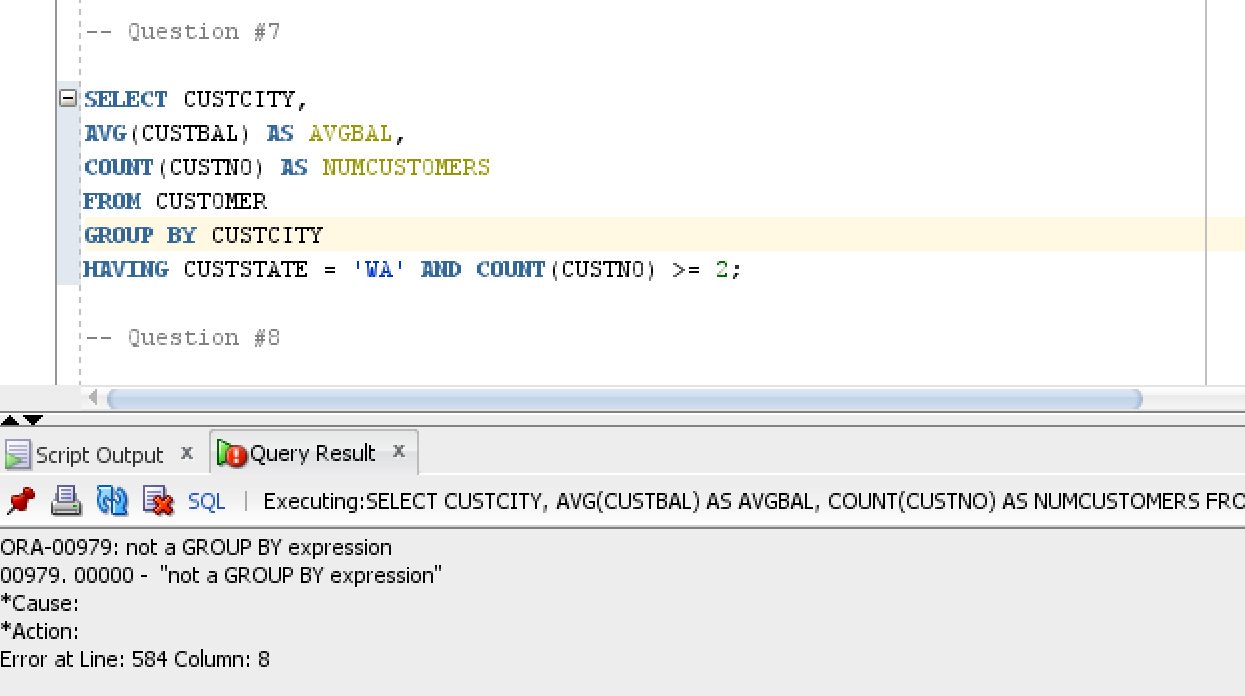









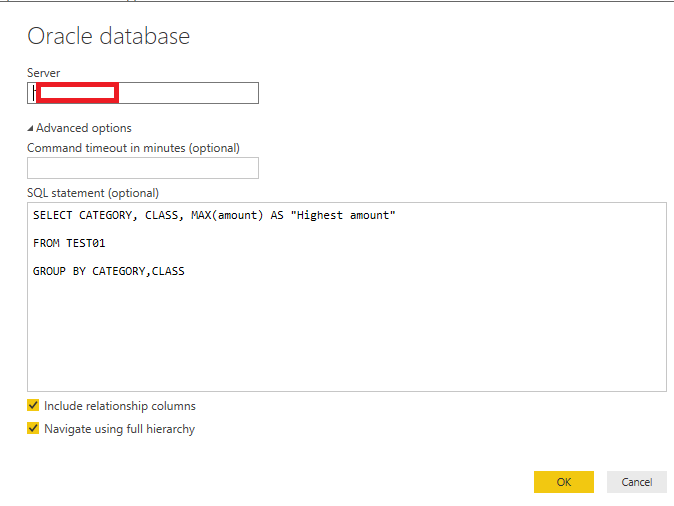








![오라클] ORA-00979: not a GROUP BY expression 오라클] Ora-00979: Not A Group By Expression](https://t1.daumcdn.net/cfile/tistory/9995B9335AFD892033)


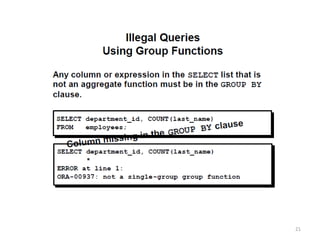


![Oracle - Error] ORA-00979: GROUP BY 표현식이 아닙니다. - Oracle - Error] Ora-00979: Group By 표현식이 아닙니다. -](https://img1.daumcdn.net/thumb/C176x176/?fname=https://blog.kakaocdn.net/dn/ufXtH/btqEozRaZ5g/kyYfiFGAszJ8BDkKEBuJ3K/img.png)



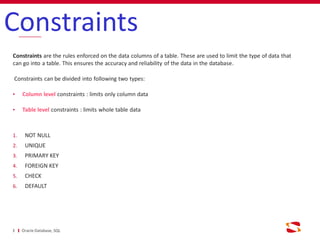
![오라클] ORA-00979: not a GROUP BY expression 오라클] Ora-00979: Not A Group By Expression](https://img1.daumcdn.net/thumb/C176x176/?fname=https://t1.daumcdn.net/cfile/tistory/99EC3D4E5B4E8CF121)
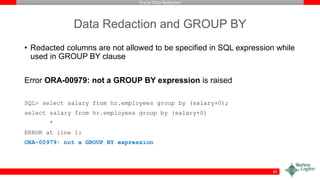

Article link: ora 00979 not a group by expression.
Learn more about the topic ora 00979 not a group by expression.
- ORA-00979 not a group by expression – sql – Stack Overflow
- How to Fix a ‘Not a GROUP BY Expression’ Error
- ORA-00979: not a group by expression – TekStream Solutions
- ORA-00979 not a GROUP BY expression tips
- How To Resolve ORA-00979 Not a GROUP BY Expression
- ORA-00979: not a group by expression – Techgoeasy
- Error: “ORA-00979: not a GROUP BY expression at OCI call …
- ORA-00979: not a GROUP BY expression – Yawin Tutor
- ORA-00979: not a GROUP BY expression
See more: https://nhanvietluanvan.com/luat-hoc/